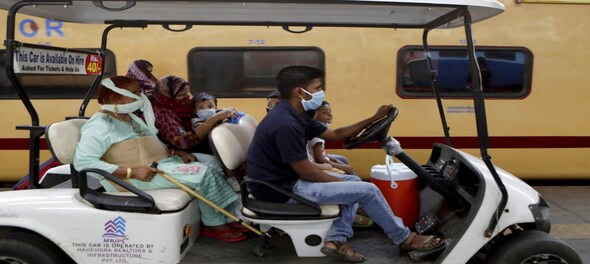
PM Modi’s message during his nationwide address on March 19 was clear – the Covid-19 pandemic can hit any country and the need is to contain the spread at this juncture.
The bold measures taken to control the outbreak -- from closing borders to all international commercial flights, Janata curfew to work-from-home for all non-essential sectors all point towards this.
The PM also addressed why we need to do this -- referring to the growth curve of coronavirus in worst-hit countries.
“In these countries, after the initial few days, a sudden explosion of the disease has occurred. In these countries, the number of people infected with coronavirus has increased very rapidly. The Government of India is keeping a close watch on this track record of the spread of coronavirus.”
That indicates the underlying emergency and the need to contain the spread of the coronavirus. And rightly so, with the fast progression in the number of confirmed cases.
With 195 reported confirmed cases as per the Indian Health Ministry website (as of 9 am, March 20), it appears that India still has been largely untouched by the virus.
The number of Covid-19 positive cases in India, however, has doubled in 5-6 days.
This is how India compares to the rest of the world on the number of confirmed cases.
| Countries | No of days for confirmed cases to double |
| World | 11 |
| China | 38 |
| Italy | 4 |
| Iran | 8 |
| South Korea | 12 |
| Spain | 4 |
| US | 2 |
| India | 5 |
Source: Ourworldindata
The global figures also show that with appropriate containment and mitigation strategies countries like South Korea have been able to slow down the growth in the number of confirmed cases. PM Modi indicated towards that in his speech too.
Italy, which was reportedly slow in arresting the spread of coronavirus in initial days of the outbreak, saw confirmed instances go up from 322 to over 10,000 in two weeks.
India saw its first major jump in confirmed cases on March 3-4 when the numbers went up five-fold: from 5 confirmed cases to 27.
The second surge wave in confirmed cases was between March 9 and 14 where the numbers almost doubled from 44 to 84.
The last 6 days have been even critical, where we have seen the confirmed cases rise more than double. From 84 recorded on March 14, the numbers again doubled by March 18 (181 cases).
However, in the last 36 hours, there has been a 30 percent jump.
Maharashtra has seen the fastest additions in the number of confirmed cases in the last 6 days. The number of reported confirmed cases has gone up 3.5 times in the last 5 days, from 14 on March 13 to 49 on March 20 (as of 9 pm).
In just the last two days, the number has shot up by 20 percent.
COVID-19 has now affected at least 20 states and union territories in India. Fresh cases have been confirmed in Maharashtra, Karnataka, Chhattisgarh, Chandigarh and Gujarat.
Kerala with 27 cases (including 2 foreigners), Uttar Pradesh with 19, Karnataka with 15, Telangana with 16 (including foreigners) and Delhi with 17 cases have been the states seeing a larger burden.
India on Thursday reported its fourth death due to COVID-19. A 70-year-old diabetic patient from Punjab, with a travel history to Germany and Italy, succumbed to the virus.
With this India’s death rate due to COVID-19 is close to 2 percent, lower than the reported case fatality rates of 3.4 percent globally, according to the WHO. However, the fatality rates vary from country to country.
The positives in the India story is the recovery rate that stands at 10 percent.
However currently there is no data available on how many patients are serious or critical, requiring ICU or ventilatory support in India. But if we go by the world data only about 5 percent, roughly 7,000 are those in critical conditions.
While serious questions have been raised on under-reported numbers and the lack of enough testing, the Health Ministry’s reiteration that “there is no question of community transmission as of now in India” may provide some solace.
But if it is one thing that the numbers prove, India is at a stage where strong measures -- including social distancing such as the 'janata curfew' announced by PM Modi for March 22 -- would help keep the numbers under control.
First Published: Mar 20, 2020 9:42 PM IST
Check out our in-depth Market Coverage, Business News & get real-time Stock Market Updates on CNBC-TV18. Also, Watch our channels CNBC-TV18, CNBC Awaaz and CNBC Bajar Live on-the-go!


PM Modi visits Ram Mandir for first time since 'Pran Pratishtha', offers prayers before roadshow
May 5, 2024 8:59 PM
Visiting temples, obliging selfie requests, jabbing rivals – Kangana Ranaut is wooing voters on campaign trail
May 5, 2024 8:23 PM

